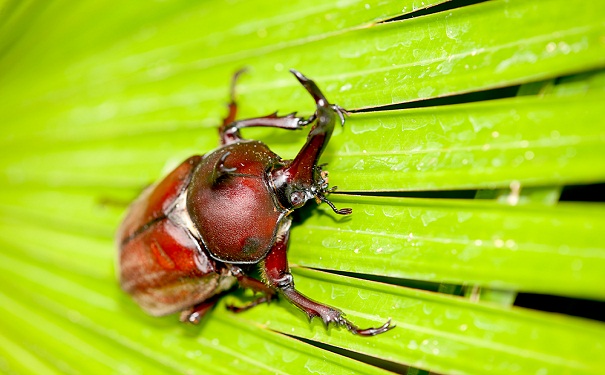
The Rhinoceros Beetle (Allomyrina dithotomus). Image: Shutterstock.
Creepy crawlies may inspire new synthetic adhesives.
The foot pads of insects, lizards and spiders are covered in arrays of fine, adhesive hairs (setae), which allow them to climb almost any natural surface without falling off. Researchers from the University of Cambridge, UK, have discovered that their risk of detachment is the result of the different forces required to remove these adhesive hairs from these surfaces.
Leaf beetles have three distinct hair shapes- pointed, disk-like and flat (spatula-tipped) – arranged in specific patterns across their feet. It has been suggested that there is a different biological function for each hair type, but due to their size (1/200th of a millimetre across), there was no way to measure this.
The researchers, James Bullock and Walter Federle, devised a method for taking the first adhesive force measurements from these microscopic hairs. By using a fine glass cantilever and observing it’s deflection through a microscope, they were able to calculate the force needed to detach each hair.
In male beetles, it was the disk-like hairs that adhered with the strongest force, followed by the spatula-tipped hairs. Bullock and Federle have suggested that the disk-like hairs allow the male beetles to stick to smooth surfaces, while the other hairs allow it to quickly detach their feet when running upside down.
These structures could be replicated synthetically to make new adhesives; however, Bullock and Federle believe that a better understanding of their detailed function is needed before this can take place. In their study, published online in the Springer journal Naturwissenschaften ““ The Nature of Science, they concluded “The question of how forces in natural adhesive systems run from the single-hair to the whole-animal level is a central, unresolved problem.
“Its understanding will be a prerequisite for the design of bio-inspired synthetic adhesives.”
Source: Springer Select






